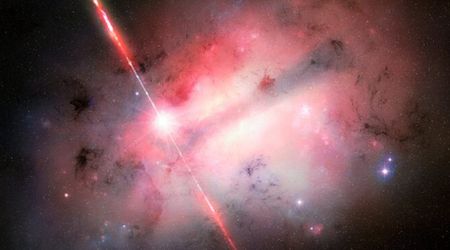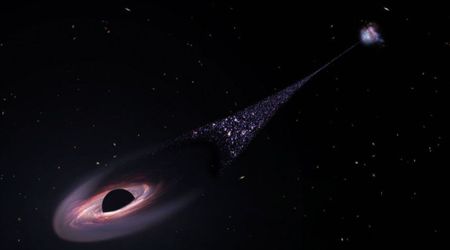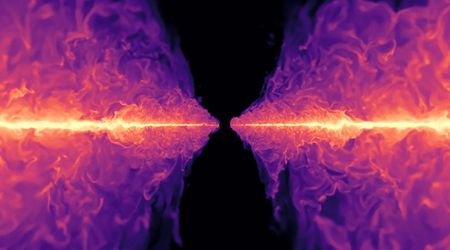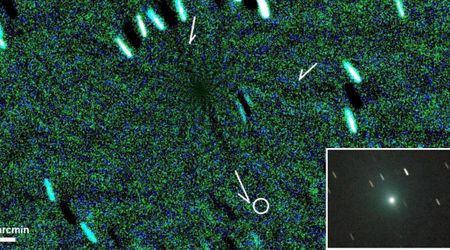3C 273 Quasar

Quasars are puzzling and enigmatic radio sources, believed to be the most brilliant single objects in the universe.
The quasar story began in the early 1960s, when the position of a strong radio source was defined with great accuracy, and its angular diameter was found to be less than one arcsecond. The object’s redshift of the spectral lines indicated a distance of 3,000 million light-years, and it followed that the total luminosity was much greater than that of an average galaxy, even though the appearance was exactly like that of a star.
To astronomers, it became clear that they were dealing with an object of entirely new type, and called it quasi-stellar radio source. This name has since been shortened to the term quasar.
3C 273 is the first identified and optically brightest quasar, the super bright nucleus of an “active” galaxy. It is visible with an 8-inch telescope from a dark-sky site, about 5 degrees northwest from Gamma Virginis. The object lies approximately 2,600 million light-years away, and through the telescope it appears like a faint star, with a magnitude that varies between 12 and 13.3.
To locate 3C 273, use the finder map below, that sows a small portion of the constellation Virgo. After you become familiar with the star field inside the red rectangle, switch to the lower-scale map. The quasar’s position is marked with a small circle, close to a 13.4 magnitude star that should be visible with a 8-inch scope.









